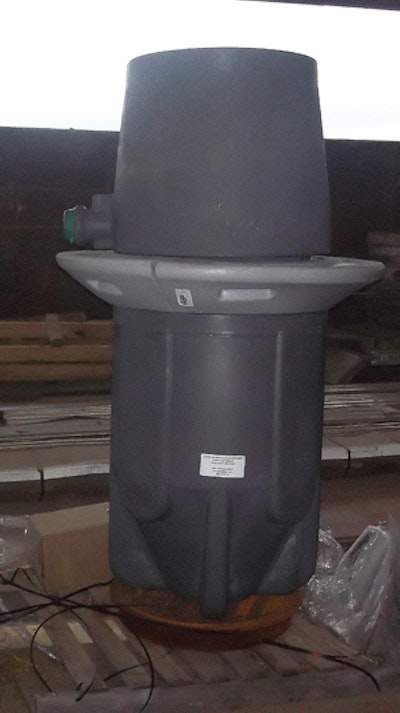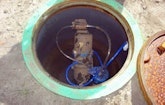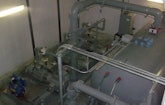
Interested in Municipal/Industrial?
Get Municipal/Industrial articles, news and videos right in your inbox! Sign up now.
Municipal/Industrial + Get AlertsGravity and vacuum sewer systems both aim to achieve the same goals; they just use different methods to transport wastewater. How do maintenance requirements compare for the two systems?
“They each have their advantages,” says Larry Moyer, wastewater superintendent with Bay County Utility Services in Bay County, Fla., and a 30-year wastewater veteran. “It’s like asking whether you prefer a ratchet wrench over an open-end wrench. They’re just different kinds of tools to get the job done.”
Bay County Utility Services has its headquarters in Panama City on the coast of the Florida Panhandle. It employs 76 people of which 29 work in the wastewater division.
“The utility is unique in that it serves the cities of Springfield, Parker, Calloway and Bay County through a joint venture, which includes lift stations, force mains, and an advanced wastewater treatment plant,” says Moyer.
Additionally, Bay County maintains its own retail system in unincorporated Bay County including the former town of Cedar Grove, which unincorporated in 2008, and two wholesale customers – Tyndall Air Force Base and the City of Mexico Beach. All told, the county’s gravity system includes 32 miles of lines and the vacuum system, installed in Cedar Grove, includes almost 14 miles.
“When you choose a vacuum system, it’s for a specific reason, either because it costs less to install, or because the geology is such that it precludes using gravity, such as a high water table and relatively flat ground,” notes Moyer. “If you talk to my maintenance people, they prefer to work on gravity systems over vacuum, just because the gravity system is traditionally well understood and fairly simple. But all of our people are skilled and perfectly capable of maintaining both types of systems – it’s the relative newness of the technology which takes some time to gain acceptance as opposed to a system some of them have been maintaining for over 30 years.”
Vacuum is a closed system
A vacuum system is a closed system served by vacuum pumps, which are used to move the wastewater through lines made of PVC to a vacuum station.
In a vacuum system, the house lateral uses traditional gravity flow to transport wastewater to what’s called a sump or valve pit. Up to four homes can be served by a single pit, although the Cedar Grove system typically uses two homes to a pit. When the sump collects 10 gallons of wastewater, a valve opens and the liquid is transported by vacuum to the main at about 15 feet per second. The mains are laid down in a stair-step or saw tooth fashion to help optimize vacuum pressure in the system, while the vacuum pumps, located at the vacuum station, cycle on and off to maintain a constant level of vacuum in the system.
The system requires no lift stations. The wastewater is transported directly to the vacuum station, which consists of vacuum pumps, a vacuum reservoir tank, a wastewater collection tank, two wastewater pumps – a lead pump and a lag pump – and electrical controls.
Wastewater is pumped from the collection tank to the wastewater treatment plant via force main.
A series of fluid level and pressure sensors regulate the operation of the system, which is powered by electricity. Emergency backup generators must be installed to allow the vacuum station to function during a power outage. As long as the vacuum station has power, the vacuum pits will function, since they don’t require power to operate, only vacuum from the station.
“However, vacuum stations require more power to run than lift stations, since they contain both vacuum and wastewater pumps,” says Moyer.
The Cedar Grove system is served by two vacuum stations.
“The simplicity of the gravity system on the homeowner side means that there are no mechanical devices between the homeowner and the sewer main,” says Moyer. “With vacuum you have a vacuum pit and a sensor which monitors the amount of wastewater in the pit and a valve which opens and shuts. The valves and sensors don’t require a lot of maintenance, but they do need periodic service to function correctly. Bay County performs both routine service on this equipment and service by request if the homeowner is experiencing problems at their home.”
The vacuum system requires no manholes at any point along the line. However, each valve pit has a small metal lid that’s removed if servicing is required. The fact that the pits sit in the right-of-way and serve multiple customers is a bonus, says Moyer, because it allows easy access and there is only one pit for every two homes that must be maintained.
Utility staff members use common tools to service the pits. The only specialized tool required is a vacuum test station used to quality test any valve rebuilds.
Venting is essential
Homeowners, however, need to be aware that proper venting in the home is critical to make the vacuum system work correctly.
“In a gravity sewer, air vents that are not fully functioning will slow down the system but it will usually still work,” Moyer says. “In a vacuum system, it will not function at all without proper venting in the building. It needs enough air behind the wastewater to get it to move under a vacuum.”
The tops of the pits must also remain slightly above ground level. Occasionally homeowners change landscaping around the pits, building up the earth around them. That subjects the pits to flooding unlike a gravity system, which is sealed below ground.
Moyer notes that the vendor of the vacuum system has acted proactively on feedback to improve the quality of the equipment over the years.
“For example, the older pits had a separate bottom and were made of a fiberglass material,” he says. “When the vacuum placed a negative pressure on the tank, the bottom flexed and the fiberglass sometimes failed – although this has not happened very often. The newer pits are made of HDPE and the bottom and side is molded together so that problem has been eliminated.”
Both the gravity and vacuum systems in Bay County are relatively new and are mostly constructed of PVC, so neither is difficult to maintain.
Typical of most domestic sewer systems, the Bay County system experiences grease buildup from time to time. While that may require sewer jetting in the gravity-fed system, Moyer notes that the vacuum lines are self-cleaning.
Vacuum leaks easier to detect
While PVC gravity lines may occasionally develop problems and leak, Moyer says that the vacuum leaks are usually easier to detect. A vacuum pump regularly cycles on and off throughout the day. However, when air is entering the system through a damaged line, the pump runs for an abnormal length of time attempting to re-establish a vacuum.
“You can look at the run-time meters on the vacuum pumps and see there is a problem in the system and then troubleshoot to find the general location of the leak,” he says. “When you get close, you can sometimes hear a loud whistling noise close to the leak. It might also be sucking sand in through the leak, but that’s better than having wastewater leaking into the soil.”
Maintenance of lift stations and vacuum stations also differs.
“Grease may build up in gravity lift stations,” says Moyer. “We may need to manually cycle the pumps to remove it, or manually skim the station and remove it in drums. In the vacuum stations, the grease does not seem to be a problem, although, we do see accumulations of sand in the wastewater collection tank which needs to be periodically cleaned out.”
The lift station pumps associated with the gravity system are pulled and serviced on a regular basis.
Vacuum pump filters and oil are changed annually. Moyer notes that the vacuum pumps have very close tolerances and must be maintained properly to keep them functioning correctly. “You cannot allow liquid – sewage – to get into them,” he says. “The vacuum stations also have more equipment to maintain overall.”
Moyer notes that the utility prefers a traditional gravity system due to overall lower operation and maintenance costs, but as new homes are built, each system is evaluated on its merits.
“New gravity lift stations and new vacuum stations would cost about the same amount to build,” he says. “The most important part of the gravity system is the lift station, so we try to put all the homes that can possibly be serviced on a single lift station. For a vacuum system, we’re likewise putting as many homes on the system as can be serviced by a vacuum station.”
The Bay County area depends heavily on the economic benefits of tourism and recreational users who favor the local beaches. Oyster and shrimp fishers likewise depend on clean coastal waters for their livelihood.
“We don’t want any spills in either our gravity or our vacuum system,” says Moyer. “Proper maintenance of both types of systems prevents that from happening.”









